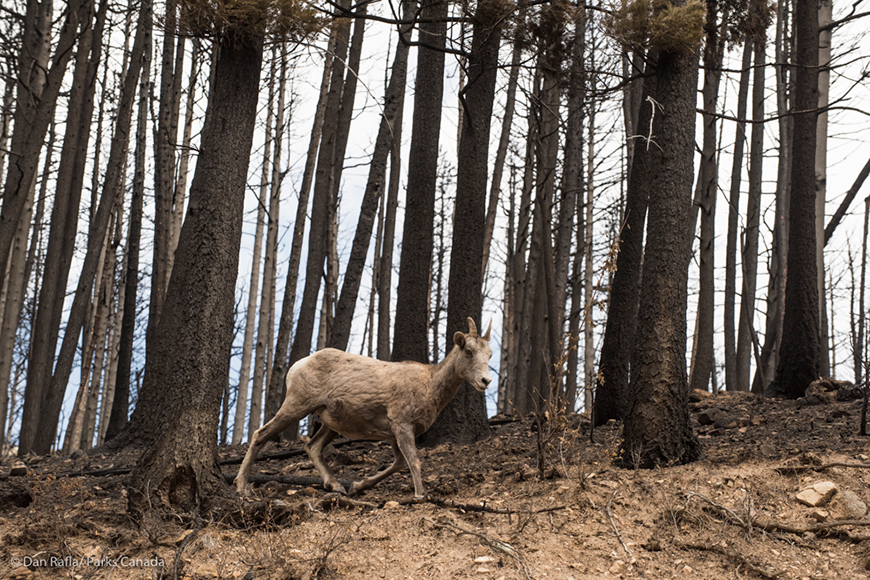Parks Canada has released a series of photos in hopes of awakening Albertans to how wildlife has been impacted by the Kenow Mountain Wildfire that burned through Waterton Lakes National Park this fall.

One of the photos shows a black bear and her cub in a barren landscape that has been charred by fire. The two animals appear to be feeding on a bull elk.
Other animals, including a cow moose and white-tail doe, are seen roaming through the burned forest and foraging in “the few unburned areas.”
But Dan Rafla, a human-wildlife conflict specialist for Parks Canada, said Wednesday that’s not unusual for wildlife in the area.
“Often a lot of these animals move and migrate anyway into the surrounding landscape,” he said. “They don’t just live within Waterton.”
Rafla said there are areas in the park that didn’t burn and that a lot of these are areas used by animals in the wintertime.
He added that while bears are no longer an issue over the winter months, immediately after the fire wildlife experts did see some of the bruins feeding on animals that had been killed in the flames.
“They were able to take advantage of those carcasses in the landscape and feed upon them before going into hibernation,” he said.
In a statement on its website, Parks Canada said the heavy smoke and “speed of growth” prevented some animals from escaping the fire and resulted in deaths.
Parks Canada said the Kenow fire was an “unprecedented situation” because of the deaths.
Rafla said some animals were euthanized immediately after the fire due to the extent of their wounds, but added that animal populations will eventually recover.
“We’re a fairly robust, healthy environment for the density of wildlife,” he said.
WATCH BELOW: Residents of M.D. of Pincher Creek call for inquiry into Kenow fire

Parks Canada is advising visitors to the area to be extra cautious as animals may “act abnormally” due to the fire.
Anyone who sees an injured animal or an animal acting strangely is asked to report it to 1-888-927-3367.

























Comments